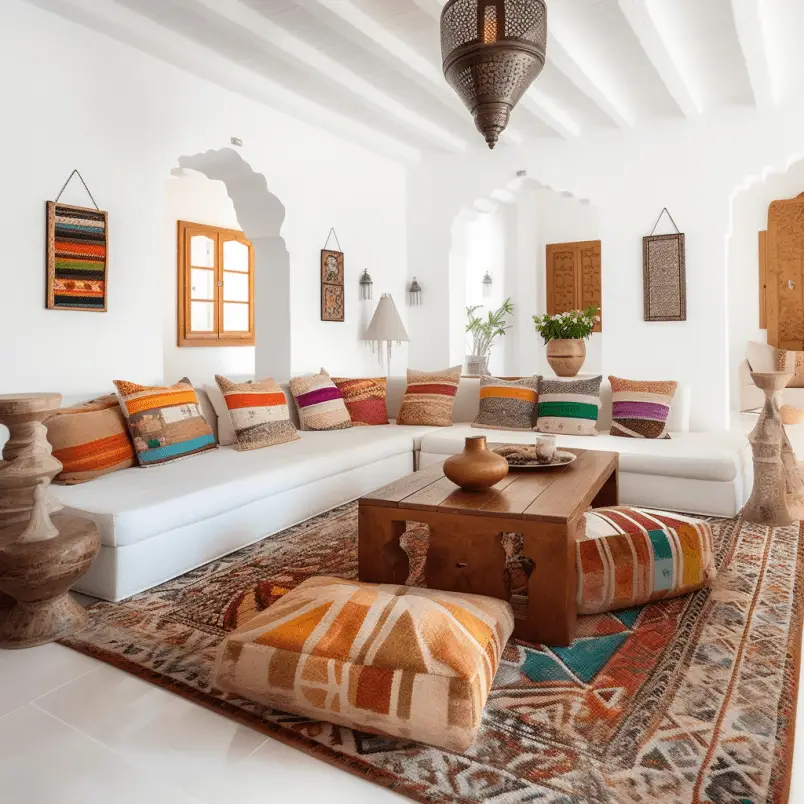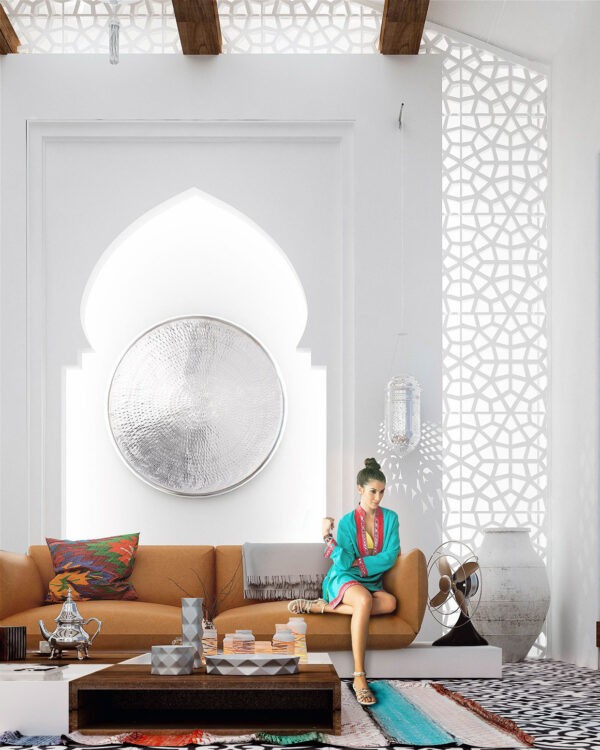Step into the mesmerizing world of Moroccan interior decor—where vibrant colors, intricate patterns, and rich textures come together to create spaces that are as enchanting as they are cozy. As someone who has experimented with various decor styles, I can confidently say that Moroccan decor brings a unique flair to any home. This guide will take you on a journey through the key elements, styles, and tips to achieve the perfect Moroccan look in your own space.
What is Moroccan Interior Decor?
Moroccan interior decor is inspired by the rich cultural heritage of Morocco, a country known for its artistic traditions and stunning architecture. This style is characterized by:
- Vibrant Colors: Think deep reds, blues, and golds.
- Intricate Patterns: Geometric shapes and nature-inspired designs.
- Rich Textures: Layering of materials like textiles, tiles, and metal work.
The Cultural Significance
In Moroccan culture, decor is not just about aesthetics; it reflects family values, hospitality, and a connection to nature. Each piece has a story, from handwoven rugs to hand-painted ceramics. Embracing this style means inviting a little piece of Morocco into your home.
Key Elements of Moroccan Decor
Color Palettes
The color palette in Moroccan decor is bold and energetic. Here are some dominant hues:
| Color | Meaning | Common Combinations |
|---|---|---|
| Red | Strength & Energy | Red & Gold |
| Blue | Calmness | Blue & White |
| Yellow | Joy | Yellow & Orange |

Textiles
Textiles play a crucial role in Moroccan interior decor. From plush pillows to colorful rugs, the textiles add warmth and comfort to a space. Common materials include:
- Berber Rugs: Handwoven and often featuring geometric patterns.
- Silk & Velvet: Used for drapes and cushions to add a touch of luxury.
- Embroidered Fabrics: Great for table runners and wall hangings.
How to Use Textiles Effectively
Layering various textiles can create a cozy nook. For instance, combining a vibrant kilim rug with soft, textured pillows can add depth to your living area.

Furniture Styles in Moroccan Decor
Seating Arrangements
Moroccan seating typically involves low sofas and floor cushions. This encourages relaxation and social interaction. Consider these types of seating:
- Divans: Low, upholstered couches that encourage lounging.
- Floor Cushions: Various sizes and patterns that add comfort and style.

Tables and Accessories
Moroccan tables often feature intricate inlays, metalwork, or rich woods. Here are a few styles to consider:
- Low Tables: Perfect for casual dining or coffee.
- Ottomans: Versatile seating that can double as a coffee table.
Lighting: Creating the Right Ambiance
Lighting is crucial in Moroccan decor. The goal is to create a warm, inviting atmosphere. Here are some popular lighting options:

Lanterns
Moroccan lanterns are often made of metal and glass, casting beautiful patterns when lit. They can be hung from ceilings or placed on tables.
Candle Holders
Using candles in decorative holders adds a romantic touch. Look for holders with intricate designs that will create lovely shadows on your walls.

Decorative Elements
Wall Artwork
Walls are perfect for showcasing Moroccan artistry. Consider:
- Tile Works: Colorful, hand-painted tiles as a focal point.
- Mirrors: Ornate mirrors can enhance lighting and space perception.

Plants and Greenery
Incorporating plants can add life and freshness to your decor. Here are some ideas:
- Indoor Palm Trees: Tall and elegant.
- Cacti: Low maintenance and adds character.
Tips for Incorporating Moroccan Decor in Your Home
Start Small
If you’re new to Moroccan decor, consider starting with a few small elements like cushions, rugs, or artwork.
Mix and Match
Moroccan decor blends well with other styles. Don’t hesitate to mix modern elements with traditional Moroccan pieces for a unique look.
Pros and Cons of Moroccan Interior Decor
Pros
- Vibrant and inviting atmosphere.
- Rich cultural heritage that adds character.
- Flexibility to mix with other decor styles.
Cons
- Can be overwhelming if overused.
- Requires maintenance to keep textiles and decor in top shape.
Conclusion: Making Moroccan Decor Work for You
Moroccan interior decor is an exciting way to bring warmth, culture, and individuality into your home. By incorporating vibrant colors, intricate patterns, and rich textures, you can create a space that truly reflects your personality. Remember, it’s all about balance—mixing Moroccan elements with your existing decor for a harmonious look.
FAQs About Moroccan Interior Decor
What are the best colors for Moroccan decor?
Rich and vibrant colors like deep reds, blues, and yellows work well. These colors can be paired with neutral backgrounds for a balanced look.
How can I incorporate Moroccan decor on a budget?
Start small with accessories like cushions and throw blankets. You can also find affordable Moroccan-style items at local markets or thrift stores.
Are Moroccan rugs worth the investment?
Yes! Moroccan rugs are often handmade and can last for many years if properly cared for. They are a beautiful addition to any room.
Can I mix Moroccan decor with modern styles?
Absolutely! Moroccan decor can complement modern styles beautifully, allowing for an eclectic mix that reflects your personal taste.
How do I maintain Moroccan textiles?
Regular vacuuming and spot cleaning are essential. Always check the label for specific washing instructions, as some items may require professional cleaning.